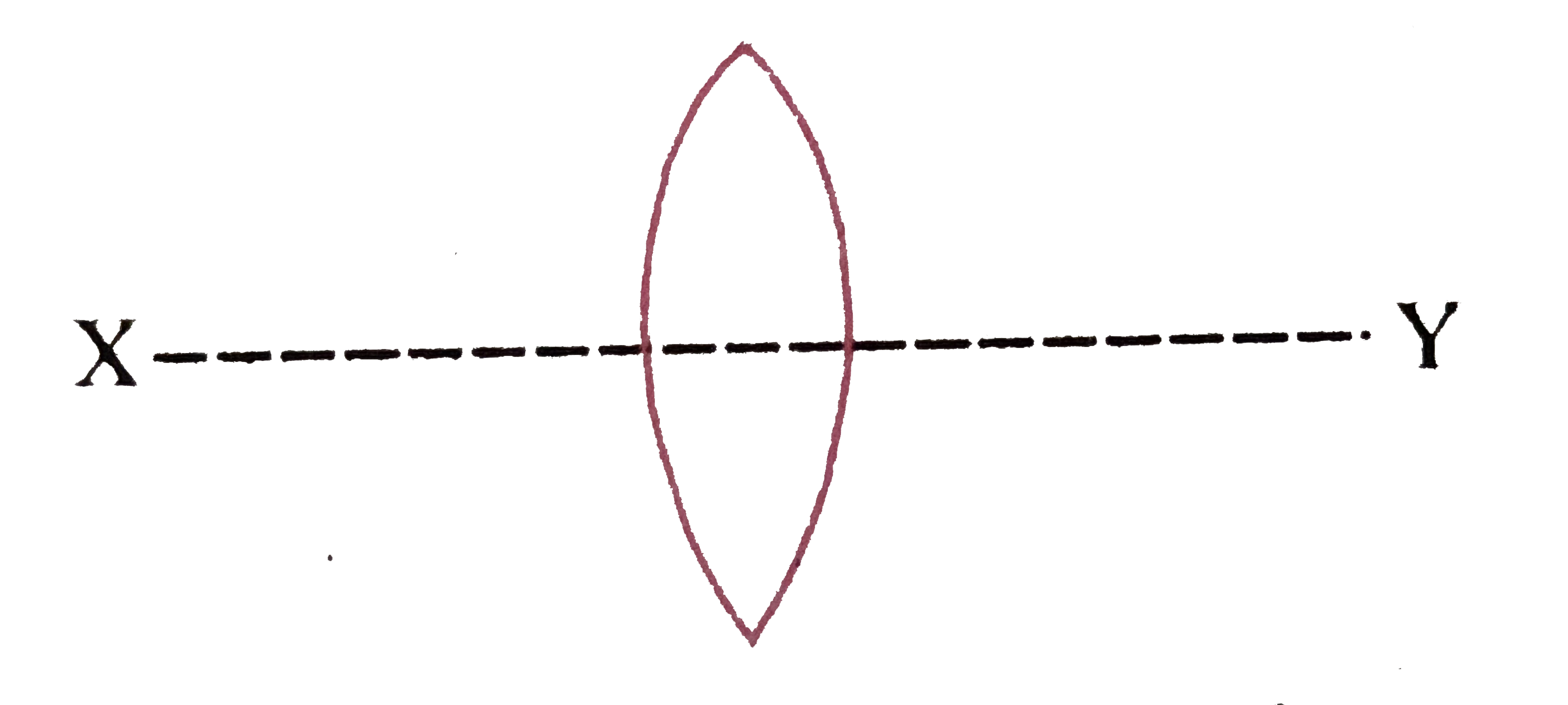Statement-1: The image focus (2ndfocus) and the object (1stfocus) for a biconvex lens are on the opposite side of the lens.
Statement-2: The centre of curvature of a biconvex lens are on the opposite side of the lens.
Statement-1 is true, statement-2 is true and statement-2 is correct explanation for statement-1.
Statement-1 is true, statement-2 is true and statement-2 is NOT the correct explanation for statement-1.
Statement-1 is true, statement-2 is false.
Statement -1 is false, statement -2 is true.
The correct Answer is:B
1st focus rightarrow if Ray passes though this point then becomes parallel
IInd focus rightarrow Ray parallel through focus
Topper's Solved these Questions
- MASTER PRACTICE PROBLEMBook:BANSALChapter:MASTER PRACTICE PROBLEMExercise:Multiple objective
Explore 131 Videos
- MASTER PRACTICE PROBLEMBook:BANSALChapter:MASTER PRACTICE PROBLEMExercise:Subjective
Explore 107 Videos
- MASTER PRACTICE PROBLEMBook:BANSALChapter:MASTER PRACTICE PROBLEMExercise:Comphrehension
Explore 134 Videos
- FLUID MECHANICSBook:BANSALChapter:FLUID MECHANICSExercise:PYQS AIEEE
Explore 10 Videos
- SEMICONDUCTORSBook:BANSALChapter:SEMICONDUCTORSExercise:CBSE Question
Explore 32 Videos
Similar Questions
The quantity// quantities that does //do not have mass in its// their dimentions (when we take standard 7 quantities as fundmental) is//are:
View SolutionIn a given system of unit standard measurement of mass is 100 gm standard measurement of length is 200 cm and standard measurement of time is 5 sec 10 J energy in the given system of unit has value N, then value of N is
View SolutionThe velocity- time graph of car moving on a straight track is given below. The car weight 1000kg.
 The distance travelled by the car during the whole motion is:
The distance travelled by the car during the whole motion is:
View SolutionA cylinder of height 20m is completely filled with water. The velocity of effux of water (∈ms−1) through a small hole on the side wall of the cylinder near its bottom is
View SolutionHow does the width of the depletion layer of a p-n junction diode change with decrease in reverse bias?
View SolutionAssertion:- The image focus (2nd focus) and the object focus (1st focus) are on the oppostie side of the biconvex or biconcave lens.
Reason:- The radii of curvature of a biconvex lens and biconcave lens are on the opposite side of the lens.
View Solutionएक उभयोत्तल लेंस की दोनों वक्रता-त्रिज्याएँ 20 सेमी है तथा लेंस की काँच का अपवर्तनांक 1.5 हैं | लेंस की फोकस-दुरी क्या होगी ?
View Solutionएक उभयोत्तल लेन्स की दोनों वक्रता त्रिज्याये 30 सेमी है तथा लेन्स के काँच का अपवर्तनांक 1.5 है। लेन्स की फोकस दूरी होगी-
View Solutionकाँच के बने द्विउत्तल लेंस की वक्रता-त्रिज्याएँ 15 cm तथा 20 cm हैं। लेंस की फोकस-दुरी निकले। (काँच का अपवर्तनांक= 1.5)
View Solutionकथन 1. वक्र - पृष्ठों से घिरे लेंस के दो मुख्य फोकस होते हैं ।
कथन 2. लेंस के दोनो मुख्य फोकस , प्रकाश केंद्र के विपरीत ओर होते हैं ।
View Solutionएक उभयोत्तल लेंस की फोकस दूरी प्रत्येक पृष्ठ की वक्रता त्रिज्या की 2/3 गुना है, तब पदार्थ का अपवर्तनांक ज्ञात कीजिए।
View Solutionकिसी उभयोत्तल लेंस के दो फलकों की वक्रता त्रिज्या 10 सेमी. तथा 15 सेमी. है। इसकी फोकस दूरी 12 सेमी. है। लेंस के काँच का अपवर्तनांक ज्ञात कीजिए।
View Solutionएक सम उभयोत्तल लेंस को चित्रानुसार XY तल द्वारा दो भागों में काट दिया जाता है। यदि उभयोत्तल लेंस की फोकस-दूरी f हो, तो प्रत्येक भाग की फोकस-दूरी क्या होगी ?

View Solutionएक द्विअवतल लेंस के प्रत्येक पृष्ठ की वक्रता त्रिज्या 20 सेमी है तथा इसके पदार्थ का अपवर्तनांक 5/3 है | लेंस की फोकस दुरी ज्ञात कीजिए |
View Solution10cm फोकस दुरी का एक उत्तल लेंस 10cm फोकस दुरी के अवतल लेंस से 5cm दुरी पर समक्ष रूप में रखा जाता है। यदि एक वस्तु उत्तल लेंस से 30cm दूर रखी है तो लेंस संयोजन से प्राप्त प्रतिबिम्ब की स्थिति ज्ञात कीजिये।
View Solution

